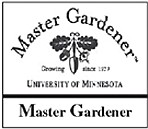June 10, 2004 at 2:25 p.m.
I have tried to raise strawberries with limited success but the weeds or a poor crop made me realize that it’s easier and faster to go to a local pick your own patch. However, last spring I weakened and bought strawberry plants through the Master Gardener program.
Since I’m back into strawberries, I thought I should read up on them. Katharine Widin is a plant pathologist and the owner of Plant Health Associates. She had an excellent article on strawberries. Along with weeds, there are some diseases and pests that can affect production.
Leaf spot and leaf scorch are two fungal diseases that can harm strawberries. These diseases are similar, and may occur singlely or together on a plant. While they are caused by different fungi, in both diseases, spores form on plant debris infected during the previous growing season. In the spring, the spores are splashed by rain or carried by wind to uninfected plants. Disease symptoms appear initially as round, purplish spots. If leaf spot has caused the blemishes, the centers will become whitish or grey as the disease develops. In the case of leaf scorch, the spots remain a reddish-purple, and will often enlarge and join together, giving the whole leaf a reddish cast.
Though these diseases are common and can appear serious they usually do not cause much injury to plants. In severe cases, they will result in dead leaves, weakened plants, and a reduction in fruit.
Gardeners can control the damage by planting resistant varieties, avoiding overhead watering, spacing plants for good air circulation, choosing a site with adequate sun, and controlling weeds around the plant. Also, remove infected plants after harvest and renovate the strawberry bed annually. If you feel you must spray, one can use a copper fungicide for both diseases. Use a fungicide only if the diseases have been a serious problem in the past and remember to apply according to label directions.
One of the most common insect pests that plague strawberries is the tarnish plant bug. The adult insect is grayish-brown with a tarnished appearance, oval in shape. The young bug closely resembles the adults except is smaller and green. Adult females come out in the spring from areas of weedy vegetation or garden refuse where they have over wintered. They lay eggs on strawberry plants and the hatched nymphs then feed on developing seeds and flowers by sucking sap from plant parts. Adults and young buds can inject toxins into shoots, buds, and fruits while feeding. These results in large, hollow seeds clustered at the end of the berry. I call this misshaped fruit nubbings.
At this point, the damage is done and it’s too late for control. As soon as you observe an average of one of these young bugs per plant, insecticidal control is necessary. Hold a white paper plate under the leaves and tap the plant to cause bugs to fall on the plate where they can be counted. They move quickly and can be distinguished easily from slower moving pests such as aphids. Sevin or malathion can be applied and is effective if used before much plant damage is evident. Apply according to label directions and observe pre-harvest spray intervals. Removing weeds and garden debris from around the strawberry patch can reduce over-wintering sites for adults.
Garden slugs can also be a problem when we consider the wet cold spring we have had. They feed on leaves, fruits, and steams with their mouthparts. Slugs may also leave slime trails as they move about the plant. They generally feed at night and during cloudy, wet weather. Cleaning up garden debris and excess mulch can eliminate slug hiding places. Trapping slugs under boards and removing them from the area will also help control this pest.
+++++
Ways to access information
www.extension.umn.edu/county/chisago Check out the ‘Hot Topics’ box in the middle of the page for current Chisago County Master Gardener news and events.
You can also click on ‘Ask a Master Gardener’ next to the cute little flower on the right hand side of the page. Here you can search 1000’s of answers from Master Gardeners around the state. If you don’t find your answer you can submit a question online or search for University publications,
Bell Museum of Natural History — For information about snakes, skunks, raccoons or other wildlife around your yard, call the wildlife information line at (612) 624-1374 or www.bellmuseum.org.



Comments:
Commenting has been disabled for this item.